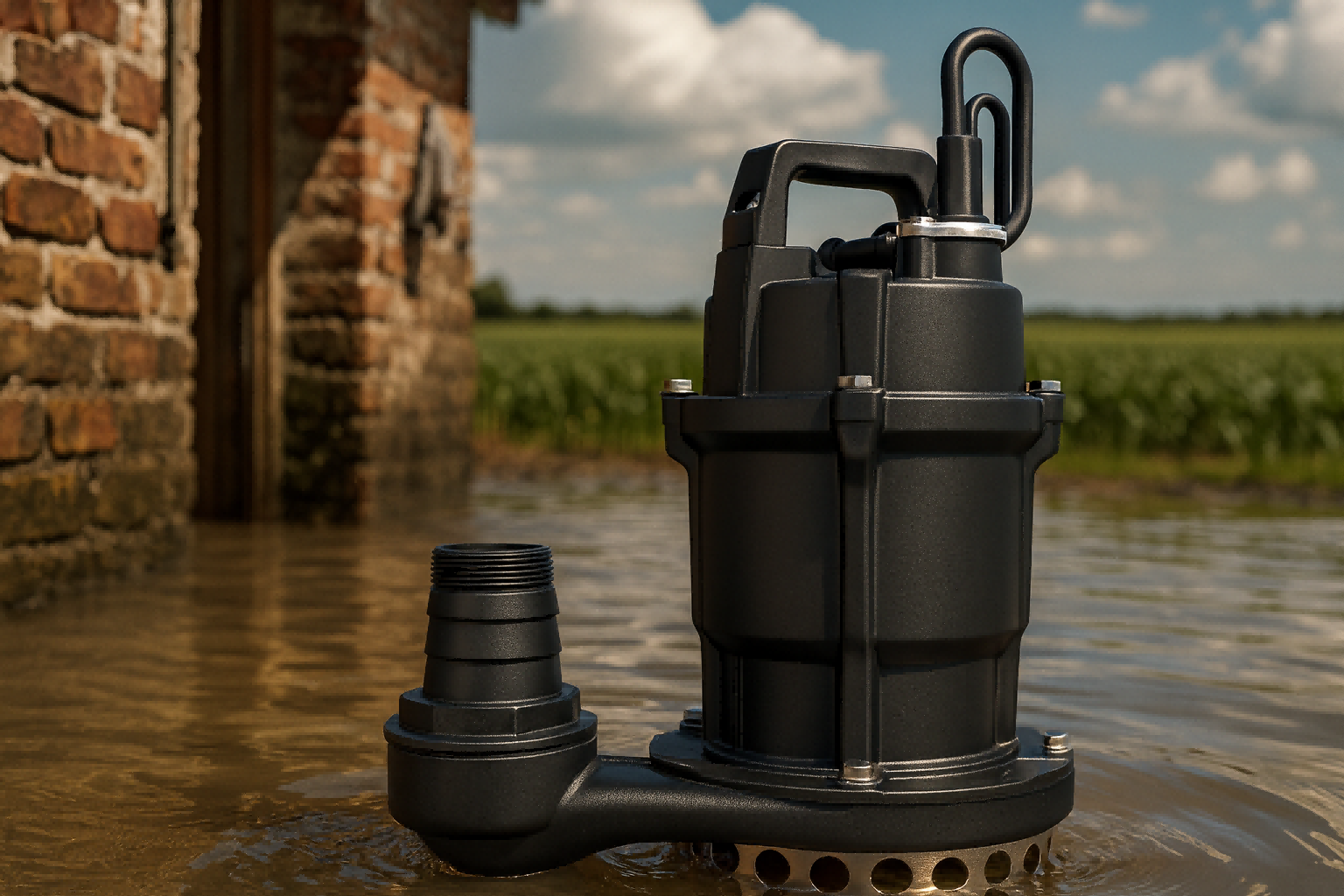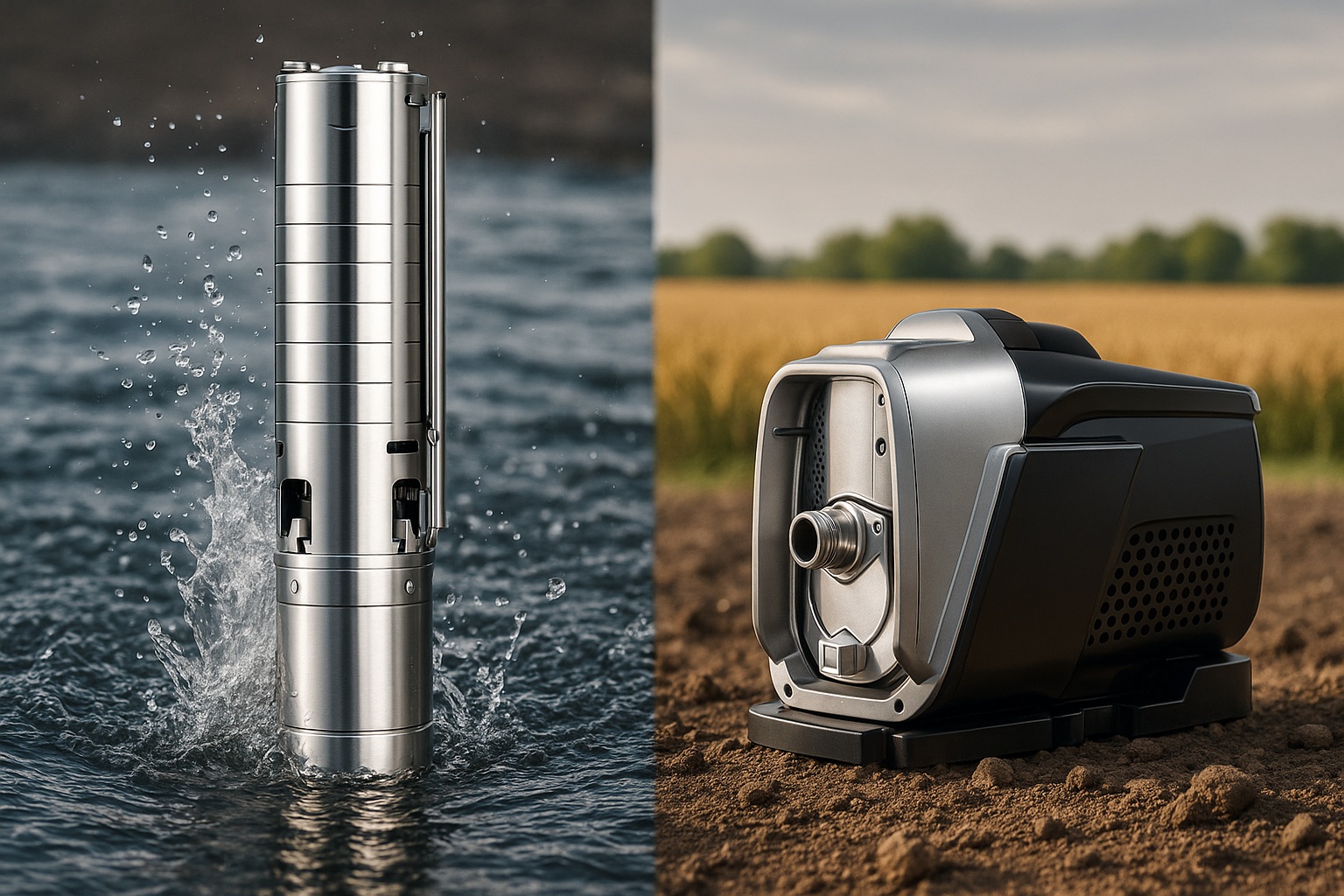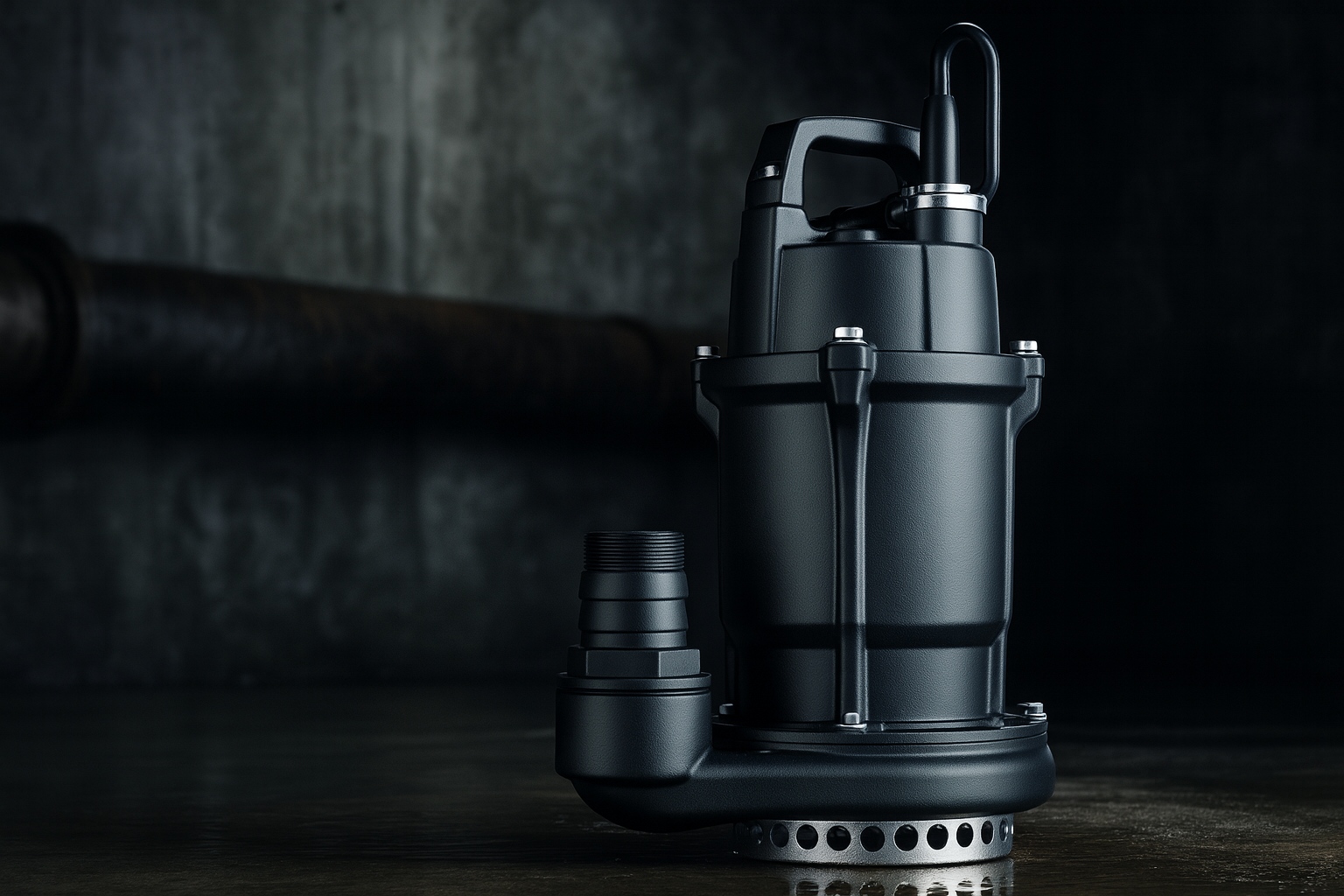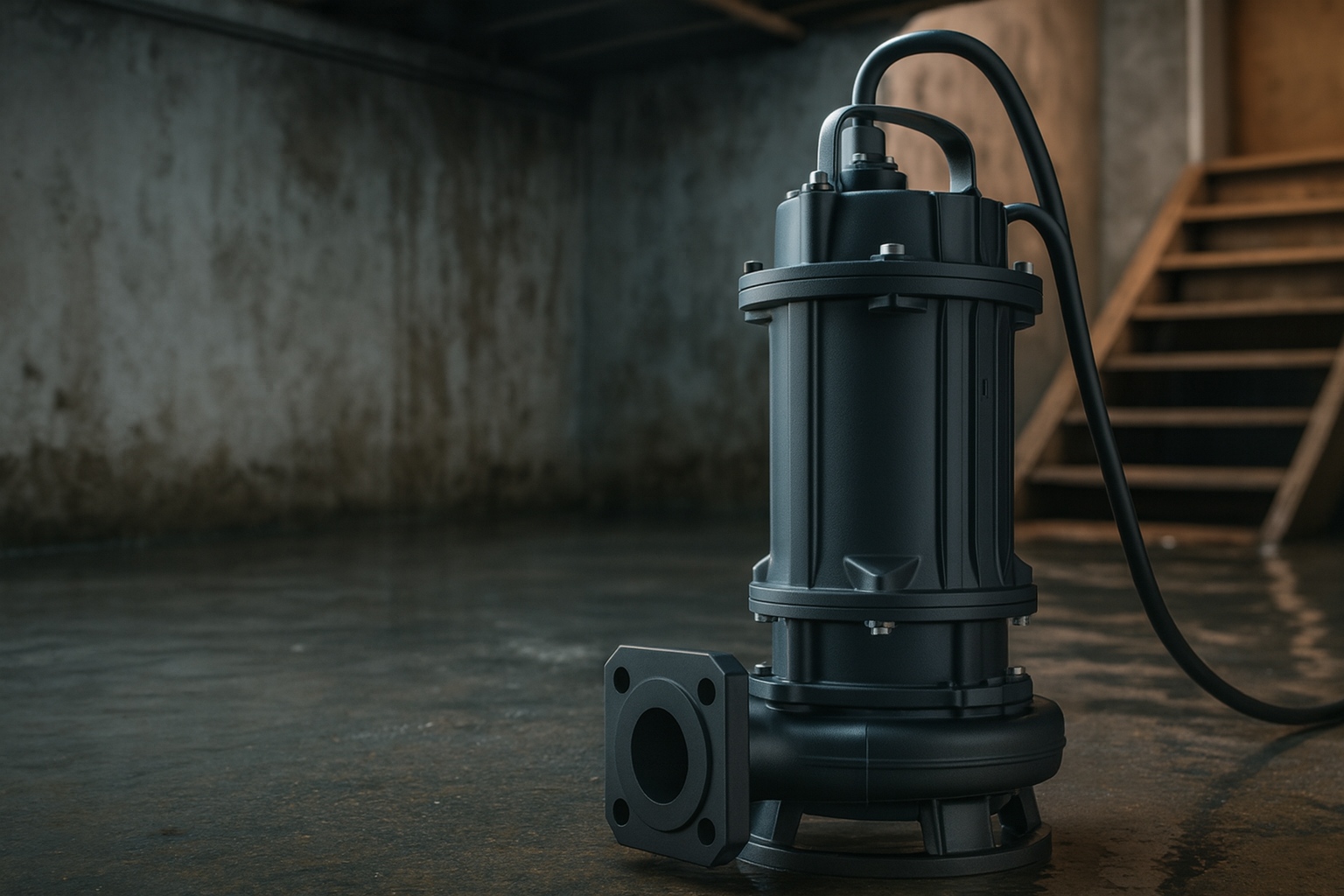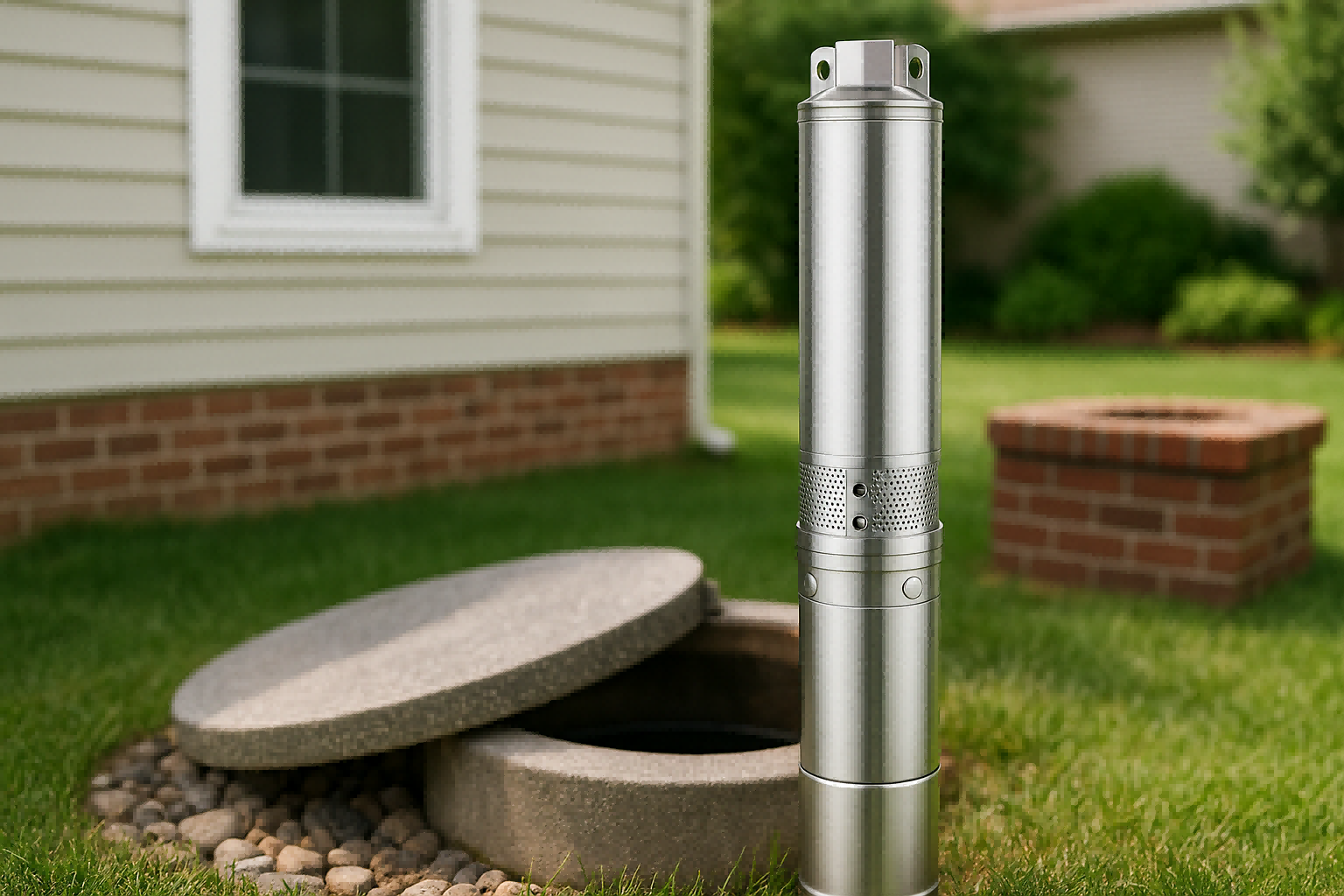Tired of weak showers and noisy pumps?
Fluctuating water pressure is a huge annoyance.
You need a solution that works quietly and efficiently without constant worry.
Common problems include inconsistent pressure, loud noise, high energy consumption, and premature failure. These often result from outdated motor technology, low-quality materials, and a lack of smart protection against electrical surges, leaks, or running dry, which leads to frequent and costly repairs.
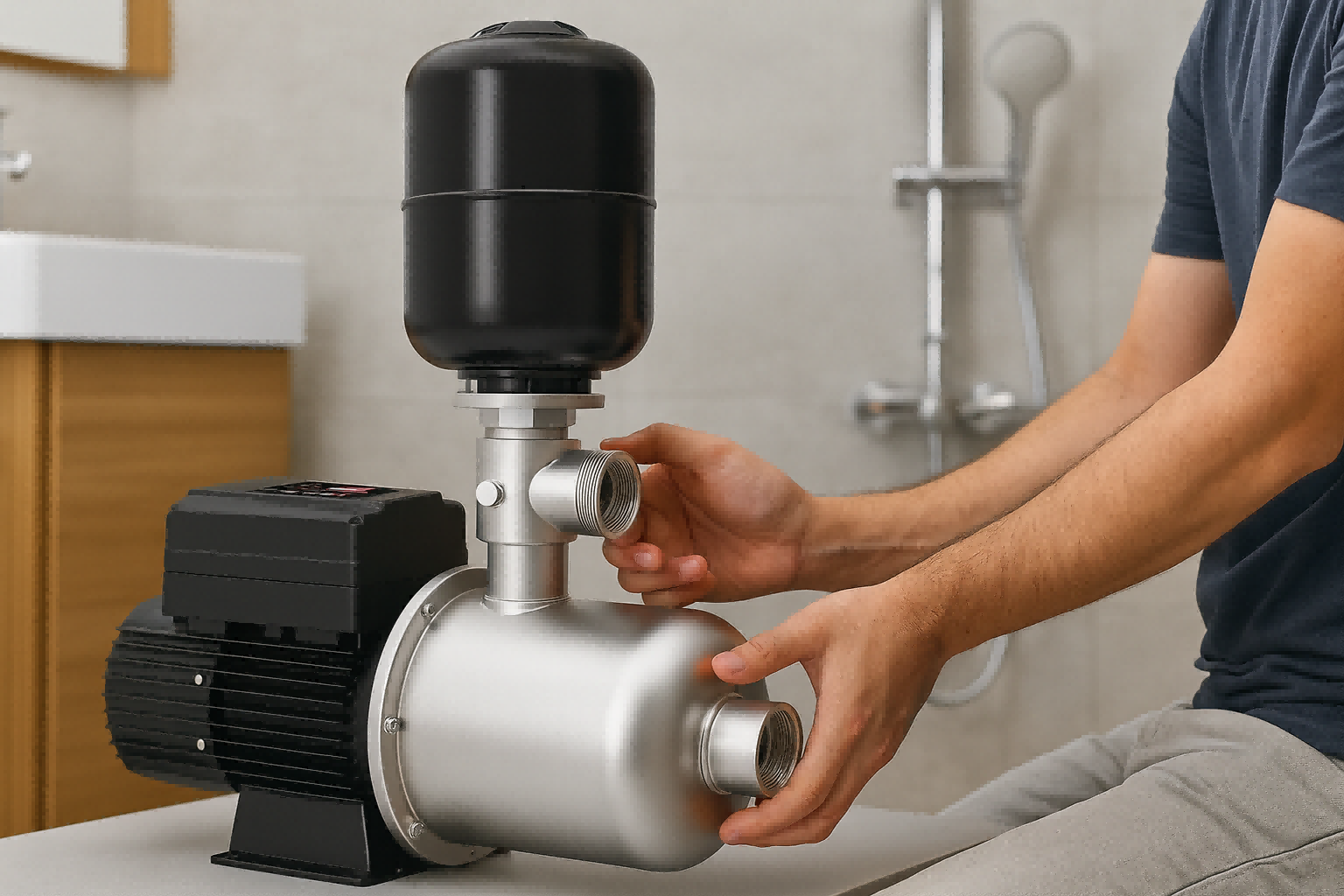
Many homeowners and property managers believe these frustrations are just a normal part of owning a water pump.
They accept the constant noise, the surprisingly high electricity bills, and the inevitable day the pump simply gives up.
But what if these problems weren't inevitable?
Modern pump technology has directly addressed these core issues, transforming a once-unreliable appliance into a smart, durable system.
Understanding the root cause of these common failures is the first step toward choosing a pump that will provide reliable service for years to come.
Let's explore each of these common problems and see how advanced engineering provides a definitive solution.
Why Do Pumps Suffer from Inconsistent Pressure and High Energy Bills?
Does your water pressure drop when someone else turns on a faucet?
This fluctuation is often caused by a basic pump that can only run at full speed or not at all.
This "all or nothing" approach wastes a tremendous amount of energy.
Pumps experience inconsistent pressure and high energy usage because traditional fixed-speed motors cannot adapt to changing water demand. They run at 100% power constantly, wasting electricity and causing pressure spikes. Modern variable frequency drive (VFD) technology solves this by precisely matching motor speed to water usage.
The technology inside a water pump directly determines its performance, efficiency, and even its lifespan. Older pump designs relied on simple induction motors that switched on and off, creating a crude and inefficient system. This method is not only responsible for the annoying pressure drops you feel in the shower but also for the loud groaning sound you hear when it kicks on. Every time that motor starts with a jolt, it sends a shockwave—known as a water hammer—through your pipes, stressing the entire plumbing system. Furthermore, running at maximum speed regardless of need is like driving your car with the accelerator pushed to the floor between every stop sign. It's incredibly wasteful and causes excessive wear and tear. This is why so many older pumps seem to burn out quickly and send electricity bills soaring.
Core Drive Technology
Modern pumps solve this problem with a smarter approach.
The core of this solution lies in two key components working together: a Variable Frequency Drive (VFD) and a Permanent Magnet Synchronous Motor (PMSM).
Instead of a simple on/off switch, the VFD acts like a sophisticated throttle.
It constantly monitors the water pressure in your pipes.
When you turn on a tap, the VFD tells the motor to speed up just enough to meet that demand and maintain perfect pressure.
When you turn the tap off, it slows the motor down smoothly.
This synergy ensures the pump only uses the exact amount of energy needed at any given moment.
The Benefits of Smart Motor Control
This intelligent control system eliminates the most common pump frustrations.
The benefits are immediate and significant.
- Soft Start & Soft Stop: The motor gently ramps up and down. This eliminates the violent "kick" of traditional pumps, which protects your pipes from water hammer and reduces stress on the motor itself, leading to a much longer life.
- Constant, Stable Pressure: The system can be set to a precise pressure level (e.g., 3.0 bar). Whether one faucet is open or five, the VFD and PMSM work together to hold that pressure steady, providing a comfortable and reliable water supply.
- Ultra-Quiet Operation: Because the motor isn't constantly slamming on and off and often runs at a lower speed, the operational noise is drastically reduced. Many modern pumps operate at levels below 50 decibels, which is quieter than a normal conversation.
Below is a comparison of how these systems handle common tasks.
| Feature | Traditional Fixed-Speed Pump | Modern VFD Pump |
|---|---|---|
| Pressure Control | Fluctuates wildly | Perfectly constant and stable |
| Energy Usage | Always runs at 100% power | Varies based on demand, saving energy |
| Noise Level | Loud clunks and humming | Ultra-quiet, often below 50dB |
| Mechanical Stress | High due to abrupt starts/stops | Low due to soft start/stop function |
This advanced motor and drive technology is the foundation for solving the most fundamental problems of water boosting, turning a noisy, inefficient appliance into a silent and intelligent part of your water system.
What Causes Premature Pump Failure and Costly Repairs?
Are you fed up with replacing your water pump every few years?
The constant need for repairs and replacements often points to a single cause.
The problem lies in low-quality internal components that simply can't handle long-term stress.
Premature pump failure is typically caused by the use of inferior materials and components. Parts like plastic impellers, cheap bearings, and poorly insulated motor windings wear out quickly under mechanical and thermal stress. High-quality construction with stainless steel, premium bearings, and advanced motor engineering is essential for durability.
A pump is a mechanical system that is in constant motion, and the quality of every single part matters. Manufacturers can cut costs by using cheaper materials, but this always comes at the expense of longevity. For example, a plastic impeller might work fine initially, but over time it can warp from heat or be eroded by small particles in the water. Standard motor bearings create more friction and noise, eventually failing and causing the motor to seize. The windings inside the motor are also critical; if they use low-grade insulation, they are more susceptible to overheating, which is a leading cause of motor burnout. These individual points of failure add up, leading to a pump that becomes unreliable and eventually breaks down, often resulting in water damage or a complete lack of water supply until it's fixed. Investing in a pump built with superior materials isn't a luxury—it's a practical decision to avoid future costs and headaches.
Built with Engineering Excellence
The durability of a pump begins with its core components.
A commitment to high-quality materials ensures a long and reliable service life.
This focus on engineering involves every part of the pump, from the motor's core to the parts that touch the water.
- Premium Impeller: The impeller is the heart of the pump, responsible for moving the water. Using AISI304 stainless steel instead of plastic or lower-grade metal ensures it resists corrosion and wear, maintaining its shape and efficiency for years.
- High-Quality Bearings: The bearings support the motor shaft. Using precision bearings from trusted brands results in quieter operation, less vibration, and a significantly longer operational lifespan compared to generic alternatives.
Advanced Motor Construction
The motor itself is a complex piece of machinery where material quality is paramount.
Details in its construction make a huge difference in performance and heat management.
- Superior Stator Design: The stator, the stationary part of the motor, is made from high-grade silicon steel to improve efficiency. It is engineered to run cooler, with a low temperature rise that directly translates to a longer motor life.
- High-Temperature Resistance: The rotor uses advanced ferrite magnets that can withstand high temperatures without losing their magnetic properties. This, combined with Class F insulation wire, ensures the motor operates reliably even under heavy, continuous use.
Here's how these material choices combat common failure points.
| Common Failure Point | Low-Quality Component | High-Quality Solution | Benefit |
|---|---|---|---|
| Corrosion/Warping | Plastic Impeller | AISI304 Stainless Steel Impeller | Lasting hydraulic performance |
| Noise & Seizure | Standard Bearings | Precision Bearings (e.g., NSK/C&U) | 40% quieter operation, 11% longer life |
| Motor Burnout | Poor Insulation | Class F Insulation Wire | Resists high temperatures, prevents failure |
| Energy Loss | Standard Steel Core | 600-Grade Silicon Steel | Reduces heat, improves efficiency |
By focusing on excellence in mechanical and material engineering, a modern pump is built not just to work, but to last.
This approach prevents the cycle of repairs and replacements that plagues owners of inferior equipment.
How Do Moisture and Dust Damage a Pump’s Electronics?
Have you ever had an electronic device fail simply from being in a damp environment?
A pump's control board is just as vulnerable.
Moisture, condensation, and dust are silent killers of sensitive electronics.
Moisture and dust cause pump electronics to fail by creating short circuits, corrosion, and overheating. The printed circuit board (PCB) is the pump's brain, and exposure to these elements will lead to malfunction. Sealing the entire PCB in a waterproof compound (potting) provides complete protection.
Pumps are often installed in less-than-ideal locations—damp basements, humid utility closets, or outdoor sheds. In these environments, changes in temperature cause condensation to form on surfaces, including the delicate electronic components on the pump's control board. This moisture can short out circuits instantly. Over time, it causes the tiny metal contacts and solder joints to corrode, leading to intermittent failures that are frustratingly difficult to diagnose. Dust is another enemy. It can create a blanket over components, causing them to overheat. It can also become conductive when mixed with moisture, creating unintended electrical pathways that lead to board failure. Many manufacturers place the PCB in a simple plastic case, which does little to protect against condensation or fine dust, leaving the pump's intelligence exposed to its greatest threats.
Uncompromising Electronic Reliability
The most effective way to protect a pump's electronic brain is to completely isolate it from the environment.
The ultimate solution for this is a technique known as potting.
Potting involves fully encapsulating the entire Printed Circuit Board (PCB) in a durable, non-conductive, and waterproof resin.
This process creates an impenetrable barrier.
The UltraShield Advantage
Once the PCB is potted, it is completely sealed off from the outside world.
This method delivers several critical advantages that dramatically increase the pump's lifespan.
- Total Environmental Protection: The sealed controller achieves an IP67 protection rating. This means it is 100% protected against dust and can be submerged in water without damage. It makes the electronics immune to moisture, humidity, and condensation.
- Vibration and Shock Resistance: The potting compound also holds every component securely in place. This makes the board highly resistant to the vibrations that are a natural part of a pump's operation, preventing small solder joints from cracking over time.
- Drastically Extended Lifespan: By preventing the vast majority of moisture- and dust-related failures, this single feature can extend the life of the electronic controller by an estimated 3 to 5 years.
The table below illustrates the difference in vulnerability between a standard and a potted PCB.
| Environmental Threat | Standard PCB in a Case | Potted PCB (IP67) |
|---|---|---|
| Humidity/Condensation | High Risk of Failure | No Risk - Completely Sealed |
| Dust & Debris | High Risk of Overheating/Shorts | No Risk - Impenetrable Barrier |
| Vibration | Risk of Solder Joint Fatigue | High Resistance - Components Secured |
| Accidental Water Splash | High Risk of Catastrophic Failure | Fully Protected |
This level of electronic protection is a game-changer.
It ensures that the pump’s intelligence is just as durable as its mechanical parts, providing true long-term reliability.
Why Do Pumps Fail Unexpectedly from System Faults?
Has your pump ever burned out because the well ran dry?
Or maybe it was damaged by a sudden power surge.
These external problems can destroy a pump that lacks the intelligence to protect itself.
Pumps fail from system faults like running dry, voltage spikes, leaks, or overheating because they lack sensors and software to detect and react to these dangers. A comprehensive protection system with multiple smart sensors is crucial for automatically shutting down or adjusting operation to prevent damage.
A water pump doesn't operate in a vacuum; it's part of a larger, more complex system. Problems can arise from many sources that have nothing to do with the pump itself. For instance, a municipal water shortage or a well running low can cause the pump to run without water, a condition known as "dry running." Without water to cool and lubricate it, the pump's seals will quickly overheat and fail, leading to a catastrophic motor burnout. Similarly, the electrical grid can be unstable, delivering voltage that is too high or too low, both of which can damage the motor and electronics. A small, undetected leak in your plumbing can cause the pump to cycle on and off constantly, leading to premature wear. An unprotected pump is blind to these threats. It will simply continue to run itself to destruction, leaving you with an expensive replacement and potential water damage.
A Comprehensive Suite of Protections
True reliability comes from a pump that can think for itself.
Modern pumps incorporate a suite of intelligent software protections that act as a comprehensive safety net.
This system uses a network of sensors to constantly monitor both the pump's internal status and the external conditions of the water and electrical systems.
It is designed to anticipate and prevent damage from a wide range of potential faults.
The "14-Shield" Safety System
This intelligent protection system actively monitors for over a dozen unique threats.
Key protective functions can be grouped into two main categories.
Electrical & Thermal Protections
These functions guard the heart of the pump—the motor and controller—from dangerous conditions.
- Voltage Protection: Automatically shuts down if input voltage is dangerously high or low.
- Overcurrent & Stall Protection: Prevents motor damage if the impeller becomes jammed or overloaded.
- Overheating Protection: Monitors the temperature of both the driver board and the water itself, shutting down to prevent a burnout.
System & Sensor Protections
These functions watch over the entire plumbing system to prevent external issues from harming the pump.
- Dry Run Protection: This is one of the most critical features. If it detects a water shortage, it doesn't just shut off. It engages a smart recovery algorithm, attempting to re-prime itself at set intervals. This prevents the pump from running dry while also automatically restoring water service as soon as it's available.
- Antifreeze Protection: In cold climates, it will periodically run the pump for a few seconds to prevent the water inside from freezing and cracking the pump housing.
- Pipeline Leak Warning: If the pump is cycling on too frequently, it will alert the user to a potential leak in the system, saving water and preventing pump wear.
| Threat | Unprotected Pump | Protected Pump with "14-Shield" |
|---|---|---|
| Well Runs Dry | Motor burns out | Enters smart dry-run recovery mode |
| Power Surge | Electronics are fried | Shuts down via over-voltage protection |
| Small Pipe Leak | Cycles constantly until it fails | Issues a pipeline leak warning |
| Impeller Jammed | Motor overheats and fails | Shuts down via stall protection |
This multi-layered, intelligent system acts as a 24/7 guard for your investment.
It transforms the pump from a simple machine into a self-protecting device that actively avoids the conditions that lead to failure.
How Can You Troubleshoot and Control Your Pump Effectively?
Is your water pump a mysterious black box?
When something goes wrong, you have no idea what the problem is.
A lack of information makes it impossible to manage your system or diagnose issues.
Effective pump control and troubleshooting require a clear user interface that displays real-time operational data. A simple screen showing pressure, power consumption, motor speed, and voltage allows users to understand the pump's status and diagnose issues without guesswork. LED indicators provide instant fault alerts.
For far too long, water pumps have been difficult to interact with. Many have no display at all, or just a few cryptic lights. When the water stops flowing, the troubleshooting process becomes a frustrating guessing game. Is it a lack of water? An electrical problem? A leak? Without data, you are completely in the dark. Even basic tasks like adjusting the target water pressure can be complicated, sometimes requiring a technician to open the unit and adjust manual switches. This lack of transparency and user control is a major drawback of older designs. A modern appliance should provide clear, actionable information, allowing the owner to be in control of the system and aware of its operational health at all times.
Intuitive Interface and Real-Time Data
Despite its internal complexity, a modern pump should be simple to operate.
A well-designed user interface provides both easy control and deep insight into the pump's performance.
This is typically achieved with a clear digital display and a straightforward button layout.
- Simple Controls: Basic operations should be intuitive. A few buttons should allow the user to easily turn the pump on or off, adjust the desired constant pressure up or down, and reset the system if needed.
- At-a-Glance Indicators: A series of dedicated LED lights provide immediate visual feedback. These indicators can instantly show the pump's status, such as if it's running in constant pressure mode, if it has detected a leak, or if there is a problem with the input voltage.
Live System Monitoring
The most powerful feature of a modern interface is its ability to display live operating data.
This transforms the pump from a black box into a transparent system.
With a simple button press, the user can cycle through a display of critical real-time parameters, providing a complete picture of the pump's health and performance.
This typically includes:
| Data Code | Parameter Displayed | What It Tells You |
|---|---|---|
| A.xx | Water Temperature | Monitors for overheating conditions. |
| P.xxx | Real-time Power (Watts) | Shows exactly how much energy is being used. |
| xxxx | Motor Speed (RPM) | Confirms the VFD is adjusting motor speed to demand. |
| U.xxx | Input Voltage | Helps diagnose electrical supply issues. |
| t.xx | PCB Temperature | Checks the health of the electronic controller. |
| x.x bar | Recovery Pressure | Displays the pressure setting for automatic restart. |
This real-time feedback is invaluable for troubleshooting.
For example, if you have low pressure and the display shows a very low RPM, you know the pump isn't being told to work harder, pointing to a sensor or setting issue.
If the power consumption is high but pressure is low, it might indicate a blockage or a major leak.
This level of insight empowers a user or technician to diagnose problems quickly and accurately, saving time and money.
Conclusion
Common pump problems like noise, high energy use, and failure are not inevitable.
They are symptoms of outdated technology.
Modern VFD pumps solve these issues with smart, durable, and efficient engineering.
FAQs
What are the signs of a bad water booster pump?
Signs include low water pressure, strange noises, the pump cycling on and off constantly, or a sudden increase in your electricity bill.
How do you test a water pressure booster pump?
Check the pressure gauge for consistency. Listen for unusual noises and monitor its power draw with a clamp meter to see if it's working too hard.
How long should a water booster pump last?
A high-quality, well-maintained booster pump can last 15 to 20 years. Cheaper models with fewer protective features may only last a few years.
Why does my booster pump keep losing pressure?
This could be due to a leak in your plumbing, a faulty pressure switch, or a failing pressure tank that can no longer hold a proper air charge.
Can a booster pump be repaired?
Yes, common repairs include replacing seals, bearings, or the pressure switch. However, a catastrophic motor or electronics failure may require a full replacement.
Why is my water booster pump so loud?
Loud noise is often caused by cavitation (air bubbles collapsing), worn-out bearings, or the pump being insecurely mounted, which causes vibration.
Do water booster pumps use a lot of electricity?
Traditional fixed-speed pumps do use a lot of electricity. Modern variable frequency drive (VFD) pumps are much more efficient, saving up to 50% on energy costs.


